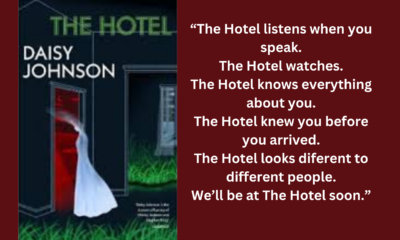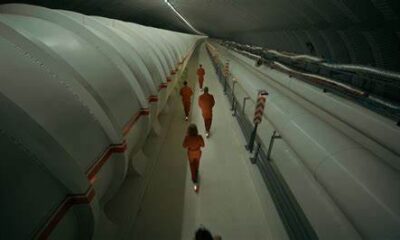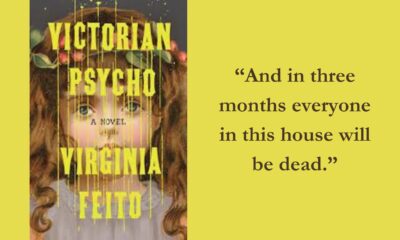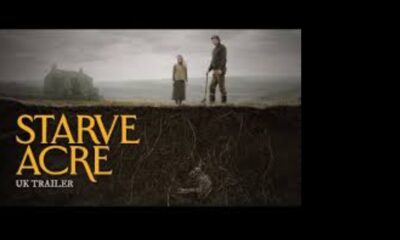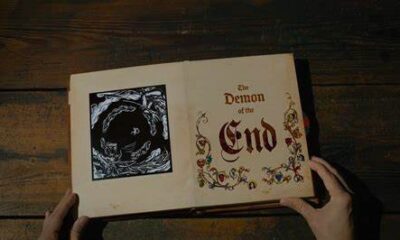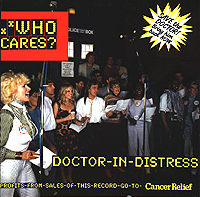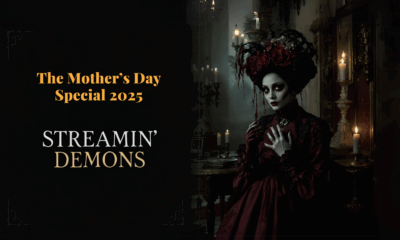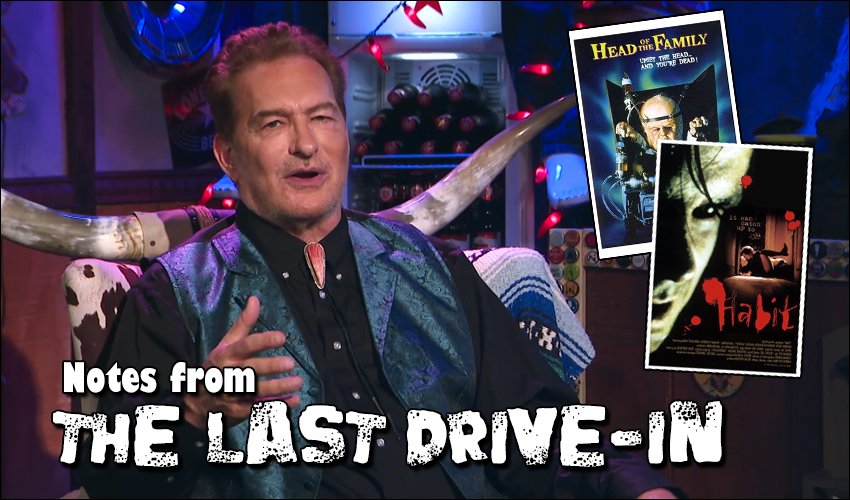
Notes from the Last Drive-In: S4E9 – ‘Head of the Family’ and ‘Habit’
More Videos
Published
3 years agoon
It is 1990s indie night at The Last Drive-In, and we’re here to cover the fun, COVID-be-damned. The review/recap this week might be lacking a little of the usual flair due to my being an incubator for a virus I dodged for two years, but the drive-in never dies, and neither have I. Tonight we get a little bit of east vs. west 1990s indie horror with Head of the Family (1996) and Habit (1997).
So how is the show this week since we gave dads their due last week? What did Shudder share with us this past Friday, June 24th?
Head of the Family (1996)
The first film of the night was the 1996 black comedy Head of the Family, directed by Charles Band. The film was written by Benjamin Carr based on a concept by Charles Band. Adolfo Bartoli served as the director of photography. The music was handled by Richard Band and Steven Morell, which Band’s contribution mostly being the theme. The film stars Blake Adams, Jacqueline Lovell, and Gordon Jennison Noice. The freaky family is played by J.W. Perra, Bob Schott, James Jones, and Alexandria Quinn.
The 1990s indie film follows two lovers, Loretta (Jaqueline Lovell) and Lance (Blake Adams), as they scheme to rid themselves of Loretta’s criminal husband, Howard (Gordon Jennison Noice). Lance soon discovers that the local family of weirdos, the Stackpools, have been secretly entrapping and murdering people under the direction of the head of the family, Myron (J.W. Perra). Lance then tries to manipulate Myron and his siblings (Bob Schott, James Jones, and Alexandria Quinn) into killing Howard, with disastrous results.
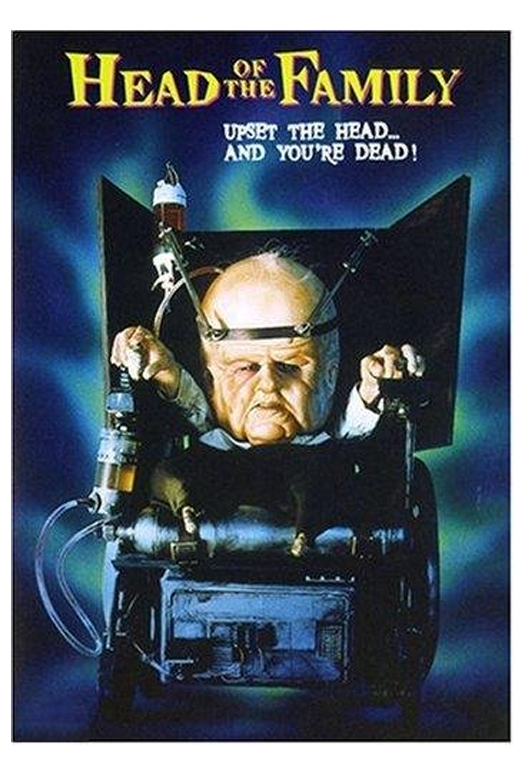
Head of the Family is one of the many bizarre, wonderful films out of Full Moon Entertainment, and for a low-budget mid-1990s film is a pretty quality production. The movie is hilarious and probably the most significant asset to why it succeeds. The concept is weird, and the play of a southern gothic-style crime story with a mutant freak family works surprisingly well. The plot of two lovers planning to rid themselves of a significant other getting in the way of their romance is old hat, but how often is it done with four superpowered siblings, one of which is a giant, wheelchair-bound head?
Except for a little bit of an info dump around the end of the first act (am I legally allowed to refer to “acts” in a Full Moon movie?) by Myron, the writing of the film is whip-smart with fun lines and great back and forth between wildly exaggerated personalities. Even the largely silent Stackpools – Otis, Wheeler, and Ernestina – have their character moments, albeit mostly in silence. The best material, however, comes from Myron’s pseudo-intellectualism contrasted with Lance’s southern-fried con-artist huckstering and Loretta’s scheming hellcattiness.
J.W. Perra is the strongest actor of the bunch, and his long career is an excellent reflection of that. He makes Myron the most fascinating part of the film and does a fantastic job making the smarmy intellectual character my favorite in the bunch. Jaqueline Lovell is also quite fun with her husky southern voice and oversexed energy. As much as I liked Blake Adams as Lance, I think Lovell held her own better against Perra, and their scene is hilarious and disgusting in equal measure.
The film’s pacing is mainly solid, though it does fumble in the third act as Myron’s overly-elaborate “Joan of Arc” stage show scene drags a bit before giving way to a hilariously hasty conclusion. There is just enough B-grade weirdness and trash to keep you going. If there isn’t some funny dialogue flying, there may be a man with a giant head or a gratuitous shot of full-frontal nudity. Sometimes there are all three at the same time. It’s wonderful.
Visually, the movie holds up quite well (sort of), and the forced perspective shots of Myron, the titular “head of the family,” are among the best achievements in the film. Forced perspective can work wonders, and though there are moments when the look can falter, Myron’s introduction is one of the best-looking scenes in the movie. Now, this is also a mid-1990s Full Moon Entertainment movie, so it can also look pretty cheap. I found myself ridiculously entertained by the wall of the bedroom set shaking violently when Otis pins Lance against the wall. Also, the diner location is one of the fakest diners I have ever seen. It’s marvelous.
My biggest gripe with the film may be the music. Full Moon movies tend to have somewhat zippy, bouncy scores that blur together and often are a tonal mismatch with the film itself. Head in the Family is already a farce – it doesn’t need to sound like one, too. There were moments during the movie when I heard the score and wondered if tumblers and acrobats were just off-screen, plying their trade.
Joe-Bobservations on Head of the Family
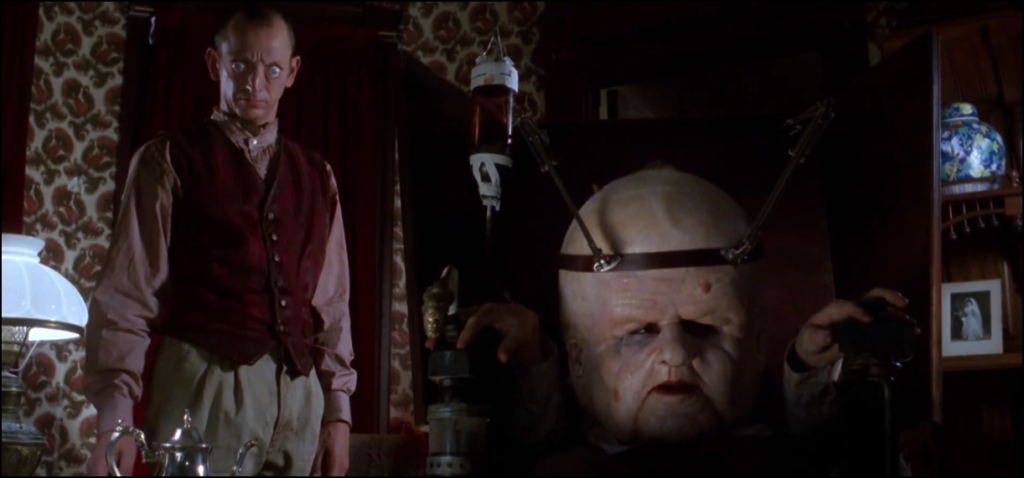
This week was a double header of special guests, pun-intended. Both guests perfectly encapsulated the 1990s indie theme. Charles Band himself dropped by the show to share some of the histories of Head of the Family, the Full Moon Entertainment story, and his thoughts on film in general. Of course, there were plenty of fabulous factoids about the movie, but the real focus was, justifiably, an extended conversation with Charles Band.
Any time Joe Bob sits down and talks with a producer, you have something gold. Charles Band is a director and writer, but he is also a producer, and that may be where his influence is most significant. The role of the producer is sometimes neglected by film writers when it really shouldn’t be. Like Uncle Lloydie, Charles Band has created something special with Full Moon that fills a niche that has become increasingly vital in this world of megacorporate film production. Joe Bob taking the time to sit and pick the brain of one of these producer powerhouses is an excellent opportunity for any filmmaker to learn a thing or two.
With that being said, if you thought Joe Bob Briggs was loquacious, Charles Band can give him a run for his bolo.
Final Thoughts on Head of the Family
As a whole, Head of the Family is a great choice for a Drive-In feature, especially as a 1990s indie. It may be a bit lighter on the blood, but there are breasts, and I would say the Stackpools are technically beasts. For what is a 1996 direct-to-video feature, I was pretty impressed with the quality, and it helps that Charles Band films tend to dig into the camp and low-budget nature and just run with them. With this movie, you get a little sex, and little violence, and a big head. Not bad for a Friday night.
Joe Bob Briggs gave Head of the Family four out of four stars. I think that assessment is pretty fair. This is just that sort of drive-in cheese we need these days. While the film was a lot of fun, some minor issues here and there, mostly the grating music, tell me to be a little more conservative with my score. I give Head of the Family four out of five Cthulhus.
 (4 / 5)
(4 / 5)
Best Line: “What’s the point of murdering your husband if you can’t fuck in a bed?” – Lorretta
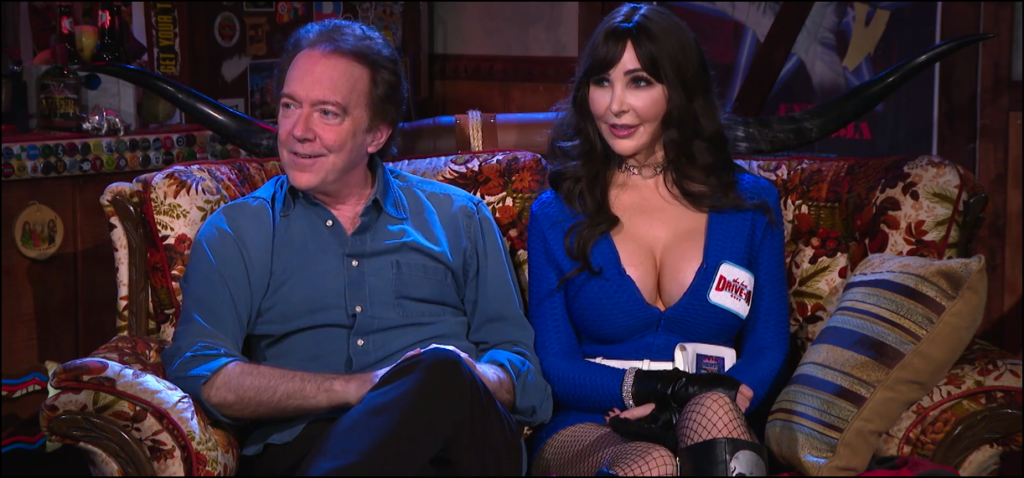
Habit (1997)
The night’s second half featured the 1997 New York indie vampire film Habit. The release date has been listed as 1995 and 1997 across different databases, but most likely, I would say 1997 is the more accurate. If I mention a mid-1990s New York indie film, you might already understand where this movie goes, and you’d be correct. This one is bleak.
The film was written, directed, and edited by Larry Fessenden, who starred. Fessenden is joined by cinematographer Frank G. DeMarco and Geoffrey Kidde handles music duties. The other performers include Meredith Snaider, Aaron Beall, Patrician Coleman, and Heather Woodbury.
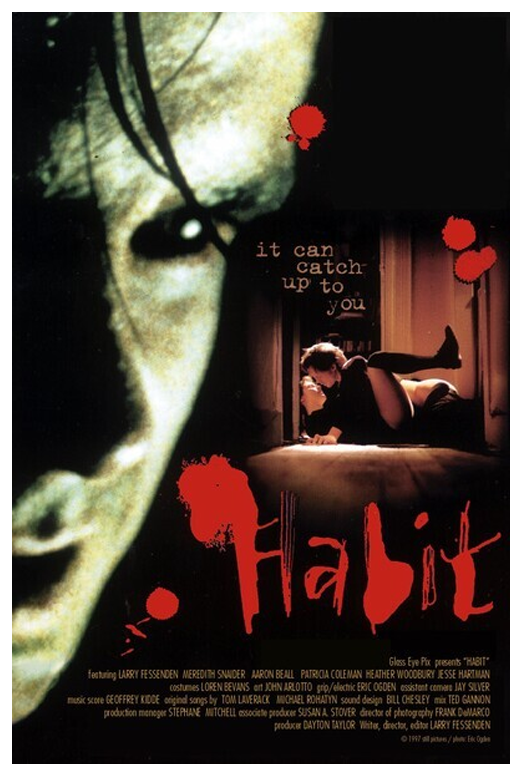
Habit is a variation on Dracula set in mid-1990s New York that follows Sam (Larry Fessenden), a disaffected alcoholic who has lost a father and his long-time girlfriend. At a friend’s Halloween party, he encounters the mysterious Anna (Meredith Snaider), who pulls him into a world of kinky sex which begins to unravel his life, much like his other addictions have before.
Habit is a bleak film but also is an excellent take on a vampire story. There are some direct references to Dracula here and there. Still, the film ultimately strikes out on its own to deliver a fascinating story about a man substituting one vice for another and the self-destruction that comes with it. The metaphor is obvious but very well executed, and the real horror doesn’t come from the vampire but rather from watching a man self-destruct and failing to do anything about it until it is too late. Sex with Anna is too exciting, too addictive, and even though Sam sees the toll it takes on his life and relationships, he cannot stop, even giving in during a struggle for life and death.
Fessenden is a fascinating character who has been a staple of the New York independent film scene for decades, and this is the work of a seasoned filmmaker. He is also a naturalistic performer, and while one may smirk at him writing and directing a film where he has sex with a manic-vampire-dream-girl, he conveys in his acting that it takes its toll. He has a presence, and at times I found myself drawing parallels to Jack Nicholson in his performance. The vaguely-autobiographical choices in characterization and performance lend a rawness to the film, which it benefits from.
The beautiful and seductive Anna is the most critical role in the film. For all the importance of Sam’s self-destructive choices, we need to buy into the idea that this blood-sucking woman is worth it, and Meredith Snaider, in her only film role, absolutely pulls it off. Snaider’s androgynous appearance and the voracious physicality of her performance establish the danger and temptation of Anna. She can go from charming to menacing at a moment’s notice, but it doesn’t matter to Sam or the audience. Everyone has a little kink, and Anna might be enough to draw it out of most viewers. What is a little bite in the throes of passion, anyway?
The acting choices of the supporting cast are generally excellent and nuanced, lending the film a realistic feel despite the supernatural theme. With that said, only one performance of the bunch frequently frustrated and confused me, and that was Aaron Beall as Nick, one of Sam’s friends. With that said, I do not feel like Beall did a poor job, but I do feel he was the wrong choice for the role, especially given an absurdly on-the-nose monologue in the film’s final act. The minute he showed up in the movie, I couldn’t help but say, “ah, so here is the theater kid.” If you know, you know.
The writing is strong as a whole with good dialogue, but the last act falters with one of the most overwritten monologues I’ve seen in recent memory. The film had done such an incredible job laying out its themes and metaphor using the language of cinema that to have Nick just rattle them out to a strung-out paranoid Sam also felt insulting to me. It may be that the hamhandedness of this moment colored my perspective on Beall’s acting. It was a real sour spot for me.
The film’s best moments may be those removed from New York City, however, as the friends go to a beach house and we get a glimpse of a better, more free Sam. A lovely scene on the shore gives us a look at what Sam could be if he could kick his habit. Still, Anna’s menace in the background, combined with the most traditional horror scene in the film, illustrates the underlying inescapability of his addiction.
The film’s aesthetics are particularly appealing to me. The sort of grungy, gothic New York City, devoid of the usual landmarks, looks fabulous. For being a film draped in shadows, the film handles light far better than billion-dollar franchises today. The film has such tremendous visual quality that while it is in color, I would love to see a black and white version. That might make it the ultimate 1990s indie vampire movie.
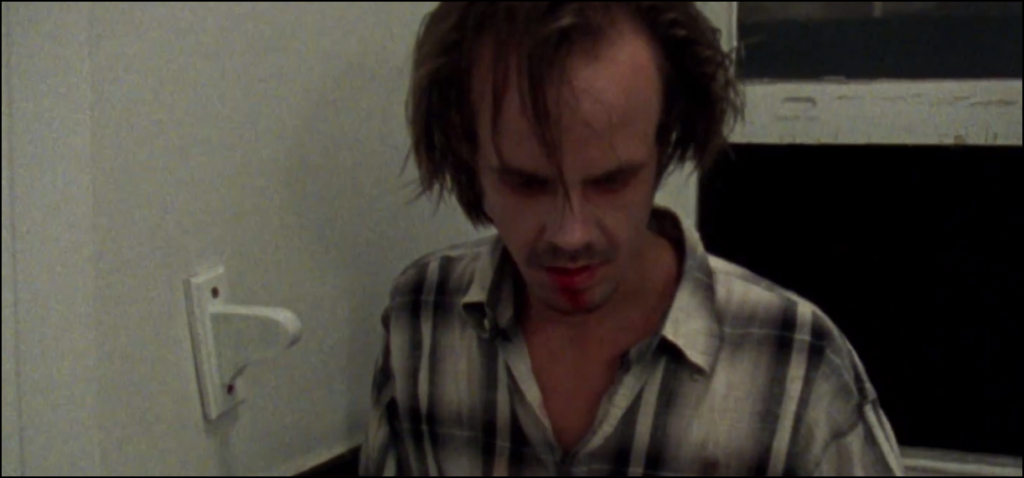
Joe-Bobservations on Habit
The second half of 1990s indie night featured an extended interview with the charming Larry Fessenden, who is just a cool, kind of weird dude. He has such a low-key and professional attitude to the craft for someone so admired and ingrained in the independent film scene in New York. Whereas Charles Band has a more slick and west coast sensibility to his cadence, Larry exudes an east coast vibe.
The interview segment was fantastic, and Fessenden was appropriately cagey regarding interpretations of his movies. Much hay is made about meaning and analysis when it comes to films like Habit. Hell, I’ve indulged in that in this very review. But there is something exhilarating about having the filmmaker commit to no answer and just encouraging whatever interpretations are out there.
Final Thoughts on Habit
Habit is on my shortlist of truly great vampire films. This 1990s indie film’s quality extends far past the novelty of the setting and theme. The performances are strong, and barring a significant misstep, the writing is excellent. I really found myself drawn in by the exploration of vampirism and addiction. In a genre as overstuffed as vampire movies, Habit is a standout.
Joe Bob Briggs gave Habit three and a half out of four stars. I think he could have bumped it up a half-star, personally. I loved it, but that third-act monologue harshed my buzz, as they said in the 1990s. I give Habit four out of five Cthulus.
 (4 / 5)
(4 / 5)
Best Line: “I suspect that the less you know about me, the longer you’ll stay interested.” – Anna
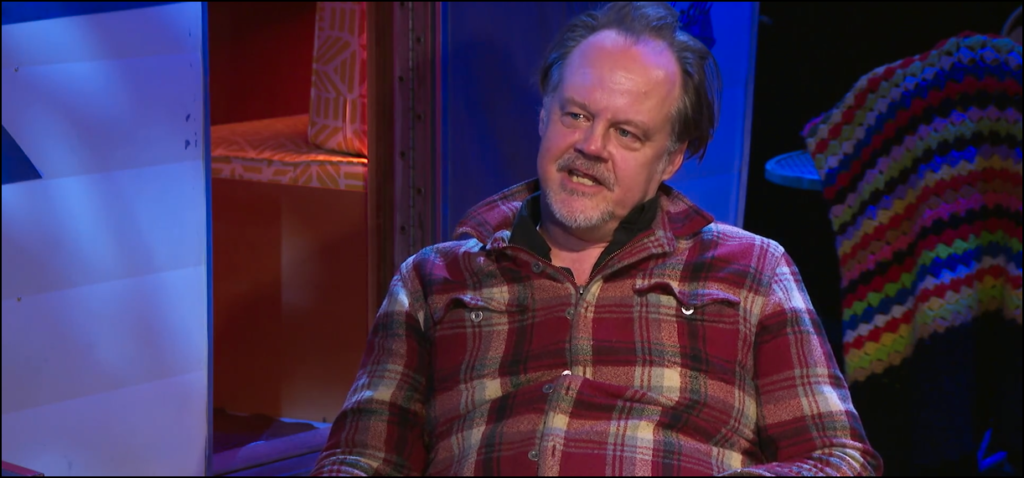
Haunted MTL Drive-In Totals
As always, we have the official Drive-In Totals from Shudder.
"Whole lotta licking going on in this one. 👅
— Shudder (@Shudder) June 25, 2022
Oh yeah, that one.#TheLastDriveIn" pic.twitter.com/17cNKDPmAi
Whole lotta aardvarking in tonight's second feature, if you know what I mean and I think you do. 😚#TheLastDriveIn pic.twitter.com/GrZ2uLSrmq
— Shudder (@Shudder) June 25, 2022
We also have my totals. As I was sick with COVID (and still am as I write this review), I do not have as many notes to work from. Hell, I didn’t even live-tweet the show this week, either.
- 5 Question Digressions
- 11 Utterances of “Thee-ate-er”
- 12 Puppet Master Movies
- 24 Speaking Roles over 4 Days (Head of the Family)
- 30 Full Moon scripts by Benjamin Carr
- Gratuitous Sets
- Gratuitous New York Grunge
- Gratuitous Talking Heads Parody
- Surprise Yuki
- Surprise Horniest Drive-In Yet
- Banking Joking
- Necrophilia Joking
- Slurp Fu
- Clipboard Fu
- Full Moon Fu
- Head Rolls
- Darcy Cosplay: Loretta
- John Brennan Cosplay: Otis
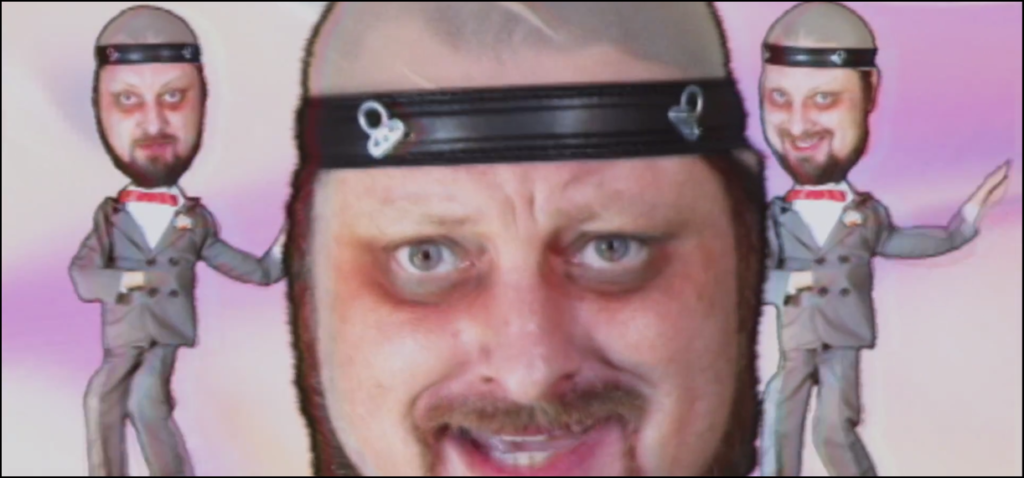
Episode Score for The Last Drive-In S4E9 – Head of the Family and Habit
I think that 1990s indie night was a compelling theme this week, and it certainly helped that I loved both films for very different reasons. There wasn’t much in the way of gimmicks in the host segments either. Not that gimmicks aren’t hilarious and welcome, but sometimes Joe Bob just chilling with the mutant fam, talking about movies, is welcome enough. The film had a sub-theme of east vs. west 1990s indie double feature that was also pretty impressive, and I think that Head of the Family and Habit were good representations of these two different spheres of film.
Combine two good movies with two great interviews with two independent film icons, and you have a good night at the drive-in. I didn’t even get into the Talking Heads parody in the night’s first half. I would give this episode of The Last Drive-In four and a half out of five Cthulhus.
 (4.5 / 5)
(4.5 / 5)
And that is it for us this week. Did you enjoy 1990s indie night? Let us know.
Please join us on Twitter next Friday as we live-tweet with the rest of the Mutant Fam during The Last Drive-In with Joe Bob Briggs. I should be over this horrid virus by then, I hope.
David Davis is a writer, cartoonist, and educator in Southern California with an M.A. in literature and writing studies.
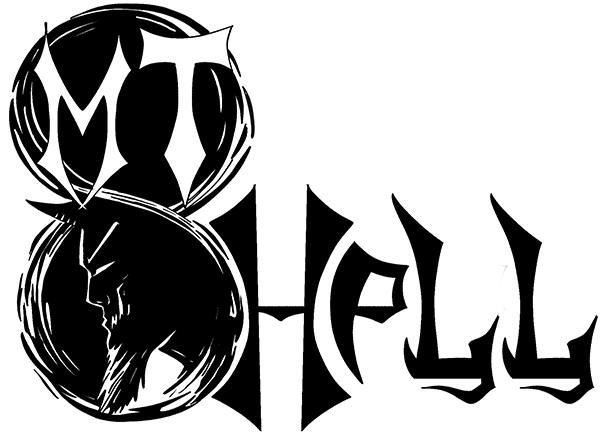
You may like
Doctor Who
Identical: Yes. The Same: No – Exploring the World of AI Reconstructions in Doctor Who
Published
2 months agoon
March 19, 2025By
J M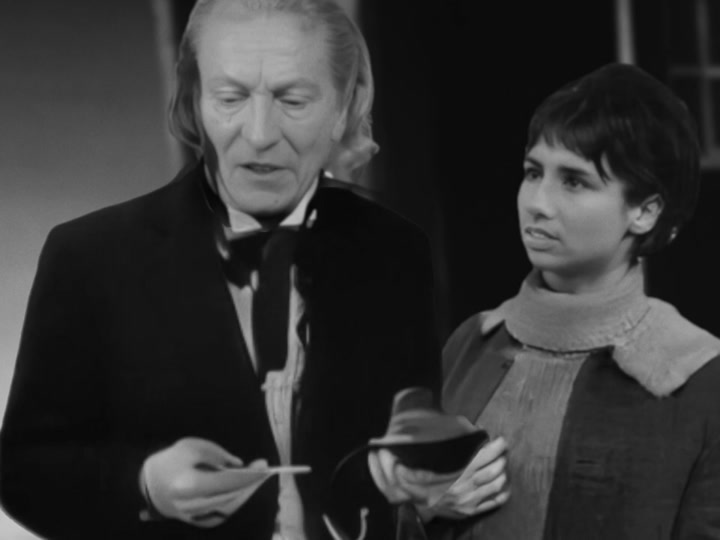
The second half of 2024 was a bit of slow for Doctor Who news. Ncuti Gatwa’s first season finished in June, and the Christmas special was months away. Comics and audio plays continued, and a Blu-Ray set of Season 25 was released – but that was all.
However, what was new and exciting was a spate of unofficial recreations of missing Doctor Who stories from the sixties. Re-animations of missing stories have occurred previously, both officially by the BBC and unofficially by fans. However, animation production time means it’s rare to have more than a few episodes a year. However within the space of six months, forty-four recreated episodes were released, with the promise of more to come.
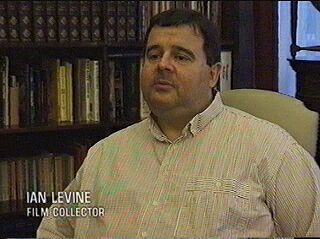
The reason how so many stories have been released so quickly is artificial intelligence (AI). These reconstructions are Generative AI, funded by professional songwriter, film producer, and fan, Ian Levine. This decision to make Doctor Who AI Reconstructions, to put it mildly, has been controversial online.
But is it worth it, in order to having otherwise missing stories returned to us? I’ve examined many of these Doctor Who AI reconstructions, and the discourse around them, to find out.
In Brief – Missing Episodes
A decent proportion of Doctor Who’s earliest years shockingly does not exist anymore. Doctor Who is one of the BBC’s biggest revenue raisers, and most famous show around the world. However it was not always the case.
When Doctor Who first began in 1963, the idea of keeping media was not really considered. Home video did not exist, and would not exist for two decades. Repeats were rare, due to the costs at the time to store old material and pay people involved in them. Also, old film presented a fire hazard. So it was often disposed of.
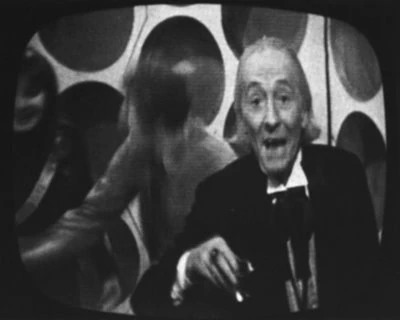
Despite this, Doctor Who is fairly lucky compared to other series. Firstly, fans at the time recorded the audio of each story. This means even the first ever Christmas Special – “A Feast of Stephen,” never broadcast internationally or repeated, still exists as an audio.
Doctor Who is also lucky because of only six seasons are not complete. In addition, of those six seasons, only half are missing only episodes from one or two stories. This allows us to get a feel for the early years of Doctor Who in a way fans of other series, like “Quatermass” and “The Avengers” aren’t able to. And part of the reason most of these early seasons survive is due to Ian Levine.
Who is Ian Levine?

Ian Levine professionally is a songwriter and DJ. He has written and produced records connected to such bands as Take That, Pet Shop Boys, Bananarama and Bucks Fizz. His total sales exceed 40 million records.
He is also well known as a prominent Doctor Who fan. There are many prominent Doctor Who fans. The series from 2004 onwards has been largely made by prominent Doctor Who fans of the 70’s and 80’s. Many of these fans contribute to Doctor Who in official ways. For instance, many older fans have written books, or audio plays. All three showrunners for the modern series would be considered prominent fans from the nineties. For Ian Levine, his main contribution is seeking to find and restore missing episodes of Doctor Who.
This work started in 1978 where Levine reportedly requested the permanent halting of old episodes of Doctor Who. At the time the idea of home video was being considered, leading to more reasons to keep old film. Levine also claimed to have rescued the first ever Dalek story from being sent into a furnace. Following this, he began purchasing private copies of the remaining stories, and attempting to return them to the BBC.
He also connected with the Doctor Who Production Team of the eighties in other ways. This included composing the theme tune for the spin-off series “K-9 and Company”, and the protest/charity album “Doctor In Distress.” His was also consulted about continuity during seasons eighteen to twenty-two.
However, he also gained a notorious reputation as obsessive in an unappealing way. During the 1985 Doctor Who hiatus, Levine was encouraged by Producer Jon Nathan-Turner to use protest the decision. Levine argued against the decision on television, and smashed his television with a hammer, and inviting newspapers to photograph it.
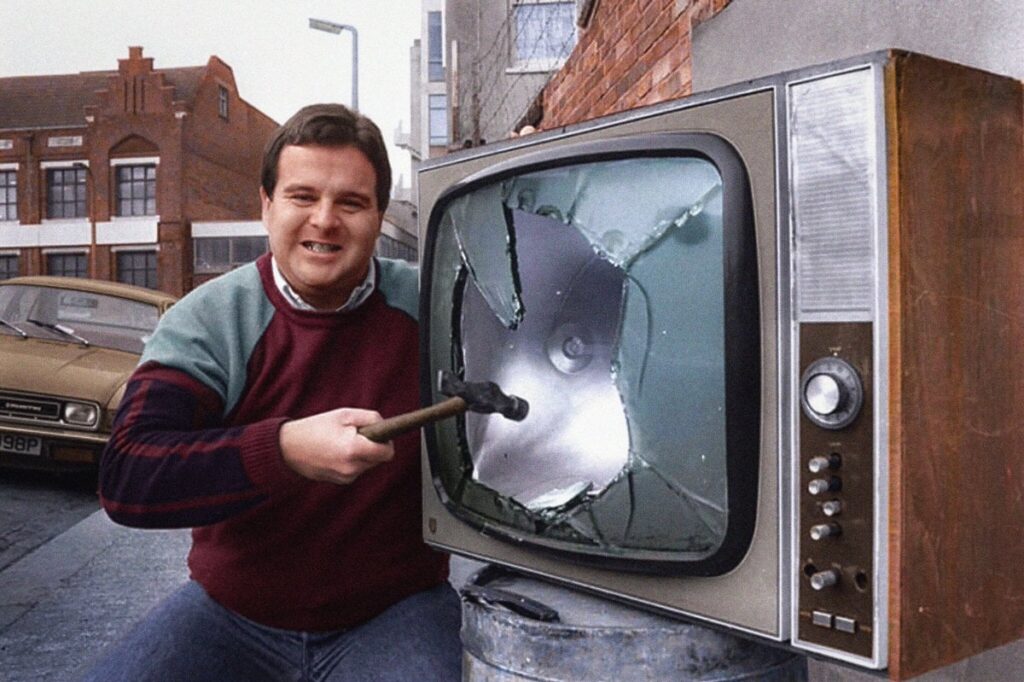
So he is fan who has both done great things, but also sought notoriety and negative attention.

More recently, Levene has worked with animating missing or incomplete episodes. This started in 2010 with “Mission to the Unknown.” This was not allowed to be shared or sold due to it being made without BBC authorization. In 2013, Ian hired an animated reconstruction of the unfinished story “Shada.” This version used pre-existing footage and new audio to create a finished product he hoped could be licensed. However, the BBC chose not to. Instead they made their own animated version that was released four years later.
- Join the Doctor (Tom Baker), Romana (Lalla Ward), and K-9 (voiced by David Brierley) as a visit to a Time Lord living incognito on Earth leads to a desperate race to a distant prison planet
- A BBC strike halted filming of this never-broadcast Baker six-episode serial written by “The Hitchhiker’s Guide to the Galaxy” author Douglas Adams
- Christopher Neame, Victoria Burgoyne co-star
Last update on 2025-03-16 / Affiliate links / Images from Amazon Product Advertising API
Subsequently, Levine made comments regarding Jodie Whittaker as the first female Doctor which were deemed by many to be sexist. Levine responded by publicly quitting the fandom, though later created his own private Doctor Who Facebook group.
This group has now become the location where his AI recreations he has funded and received donations for are shared.
The Doctor Who AI Reconstructions – How to Access
The Facebook Page: “Ian Levine’s Facebook Group” requires an agreement to two questions to join. Firstly, you must agree to respect the right to criticize Jodie Whittaker. Secondly, you must recognise this is Ian Levine’s group for sharing his opinions on Doctor Who. Agree to all this, and you’re allowed in.
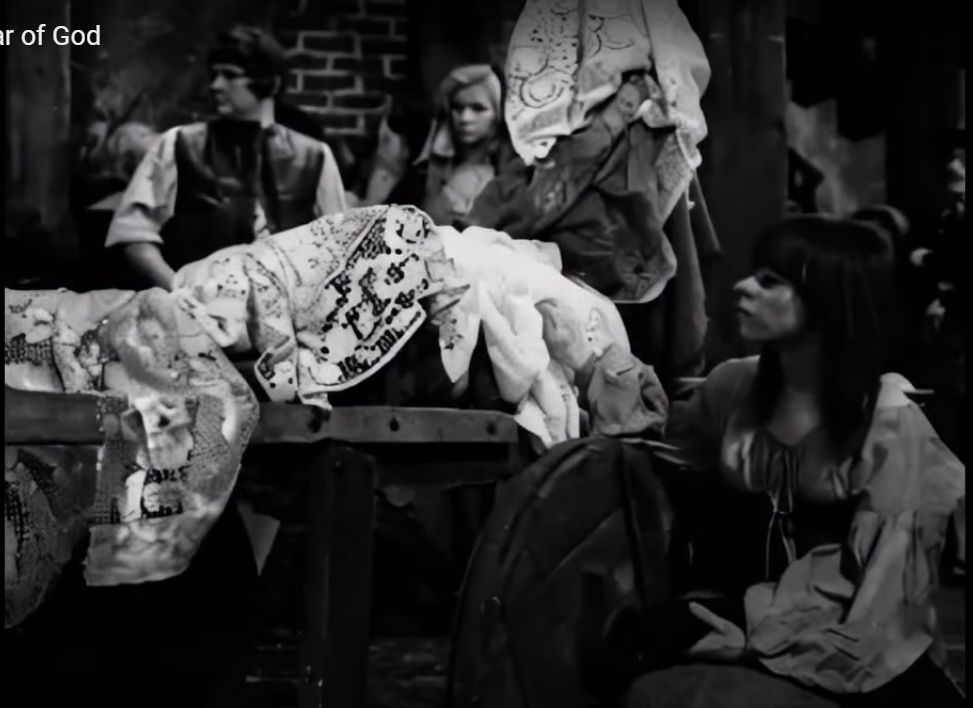
Inside the group, Levine has shared around twenty videos. This includesall of “The Dalek Masterplan,” “The Massacre,” and “The Savages.” However for the remainder, you must make a donation of fifty pounds, to become a contributor to the series.
Once your donation is confirmed, you are authorized to join the separate contributors group, for contributors only. This is where all the current videos being made are released.
Except…. None of these videos are unavailable privately. Ian Levine has placed them all on Youtube. They are unlisted, so they cannot turn up in either a Google or YouTube search. However, if you have a direct link or URL to them, they are accessible to everyone. Unlike other systems like Patreon which restrict content to only certain subscribers, nothing stops these links being shared elsewhere.
And of course, these links are shared. In response, Levine has issued threats and warnings against other Facebook groups and leakers trying to destroy his vision. In his group, people support him and join in denouncing those who criticize his work or mock it. People outside the group in response denounce Ian Levine and his supporters.
One thing I hate about internet culture is the push for tribalism. This is the idea we are joined in a selective tribe and must fight the rivals to connect. Over time the views become more strict in supporting your own tribe, and rejecting the opposition, and the middle ground is lost.
In the case of Ian Levine’s group, this is best shown by the view of alternative animations of missing Doctor Who stories. All of these are seen as not as good as Levine’s AI reconstructions. Levine’s reconstructions are seen as the only correct way Doctor Who is meant to be.
Initially Ian Levine’s AI project aimed to complete the ten missing stories not completed by the BBC. The initial project recognised the slow time it took to animate missing stories, and focused on stories that were difficult and costly to animate with people. Very soon after, however, Levine denounced many of the prior animations as “Silly Scooby Doo Cartoons.” The project was quickly extended to include stories previously animated by the BBC. Levine’s argument appears to be Levine’s objections to story changes animation had included. These included adding a surprise image of the Master in “Fury from the Deep”, prior to his debut appearance. Given Levine’s history of making things for the BBC, with the hope the BBC would license them, there have been rumours Levine initially was hoping the BBC would license some of his AI recreations, which has not come to pass.
Levine presents his animations as the most authentic way to view the missing episodes. Therefore appreciation of official animated reconstructions are not allowed. A poster saying they enjoyed the animated version of “The Celestial Toymaker,” was informed by Levine tht anyone who enjoyed the animation was unwelcome. Common responses of new animations being announced are people accusing the BBC of ruining another story. When Levine had a fault pointed out in one of his stories by Frazer Hines, who played the second Doctor’s companion, Jamie, Levine’s first response was to accept that the animation had limitations, but insisted it was still better than any animation the BBC has made. Most of all, posters all reinforce the message that AI reconstructions are the true version of the lost stories and the BBC are fools for not paying for them.
- The Celestial Toymaker sees the Doctor and his companions separated when they come up against the Toymaker
- While the Doctor plays the Trilogic Game, Steven and Dodo are forced to play their own seemingly childish, but ultimately dangerous games, with the aim of being reunited and getting back to the TARDIS
- Who will be the first to make a false move in this battle of wits, and will the TARDIS ever escape the Toymaker’s snare Fans of Doctor Who have long lamented the loss of the original 1966 master recordings of all except one of The Celestial Toymaker
Last update on 2025-03-16 / Affiliate links / Images from Amazon Product Advertising API
In response to this, or provoking this, depending on your point of you, external Facebook groups and YouTube channels are highly critical of the AI reconstructions. Some videos see them as threats, preventing the BBC from every investing in animation involving real people. Some hav dismissed the project as a scam.
So with such strong opinions on both sides, it’s time to actually watch them.
The AI Reconstructions
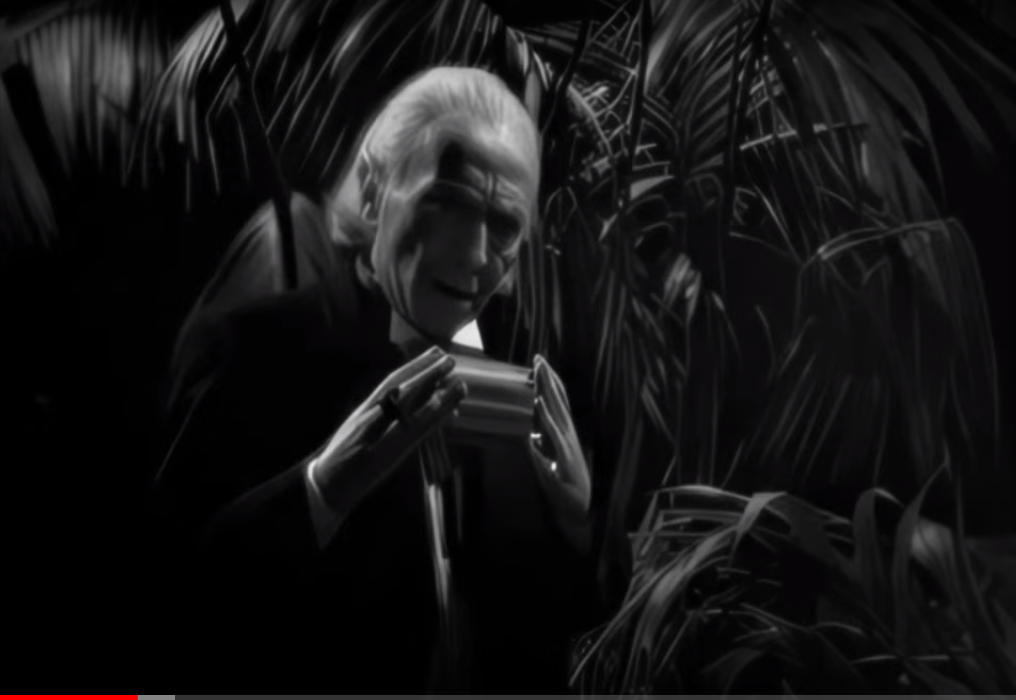
My first response on watching is they’re not that bad, but they’re not that good. Animation varies wildly in quality from story to story, making it hard to tell an overall trend towards or away from quality. However there are some good examples of how to recreate a story. “The Massacre” and “The Dalek Masterplan” for instance are incredible to watch. “The Savages” on the other hand is laughingly bad.
I chose to mostly focus on the stories not yet officially animated, so as to judge these stories by their own merit rather than compare to other animated versions of the same stories. However, it’s interesting the similarities that occur between the official animations and AI reconstructions. Non human characters (Particularly Daleks) look and move great, but people largely do not.
Animating People
Across most forms of Missing episode recovery, whether AI or human drawn, the difficulty is always animating people to show emotions and movement. Many of the official BBC animations often leave characters looking like stick figures bobbing up and down.
However one of the key things the official reconstructions provide is consistency. A human being develops a pre-existing model for characters, and because of this, these characters stay consistent over time.
AI on the other hand appears to forget things, or lose focus unless properly guided. People’s faces can change dramatically from shot to shot to the point, as in “The Savages” characters can be unrecognizable. This means, unlike with official animations, I often had to follow a story summary to figure out what was going on.
AI also forgets smaller things that make people seem human. In “The Highlanders” for instance the Doctor’s companion Polly does not blink for most of episode one, despite being in shot. This is a small detail, but throws the story into the uncanny valley – characters involve look like people but they feel wrong based on how they act.
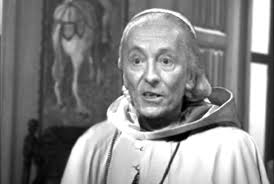
Movement is a struggle for all reconstructions because human movement is difficult to animate. Once again, “The Massacre” demonstrates small examples of movement than seem fluid, particularly in the first episode. “The Savages” on the other hand has main characters seemingly to perform scissor jump spread legged when the script call on them to walk.
How the animation occurs
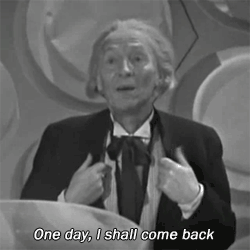
Having watched many of these animations, some of means AI generated these reconstructions became clearer. A lot of these animations, especially some of the later ones, do not actually generate much new material, instead using existing material in different ways. The First Doctor saying goodbye to Susan in the TARDIS, from Episode 6 of the Dalek Invasion of Earth, for instance is frequently re-used. This scene is redubbed multiple times in the reconstructions, when a missing story needs a scene of William Hartnell standing alone in the TARDIS.
Another method is using the telesnaps, and slightly animating the mouth and face. This creates a sense of fluidity and movement, but a very limited one. This is particularly noticeable in the Space Pirates. The resconstructions rely on switching between static photos of one cast member with mouths moving. On the one hand, this is no worse than the telesnaps, but the telesnaps were aware of their limitations, so often would use narration or subtitles to fill the gaps. However these reconstructions are presented as the most life like renditions of the missing episodes. As the original story did not have subtitles or narration, therefore, they are not allowed. As a result the story is incomprehensible.
Benefit – it exists
But despite the complaints, there is a significant benefit in these reconstructions. And that’s the fact that they exist.
Currently nine missing stories have not been officially animated by the BBC. I would love for all missing stories to be animated. However, the reality is most of the stories remaining might be too costly to animate.
Of the nine stories, six are pure historicals – stories with no science fiction elements apart from the TARDIS and its crew. These stories tended to have a larger number of human characters than stories with monsters, and a human being with their range of emotions is harder to animate than a Dalek.
Historicals also tend to have more detailed and complex scene change. A story in the future can replicate cold, grey corridors throughout a space colony. Historicals however must recreate significant locations in the world at particular times in history. Having to recreate 15th century France, for instance, is made up of multiple distinct locations. This makes historical stories more time consuming and therefore costly to animate. Therefore, despite stories being reanimated for almost twenty years now, the total number of historical episodes animated have been two – both missing episodes of the Reign of Terror.
For the remaining three stories, the limited human cast and isolated space station locations makes Wheel in Space relatively simple to animate. The Space Pirates, may also be animated as the story focusing mostly on space ships should make some aspects of the design easier to manage.
That just leaves The Dalek Masterplan¸ a massive twelve episode story, with a one episode prequel, where the Daleks chase the Doctor throughout time and space. The cast is huge, and while it is not a historical, the story would require animated sets of ancient Egypt during the building of the pyramids. None of this would be easy to do on the current BBC animation budget.
Therefore, it appears of the remaining nine missing stories, only two are highly likely to be animated.
And this is where AI can play a role. As AI does not rely much people, it means the costs to recreate a story like the Dalek Masterplan is significantly easier and cheaper than hiring a production studio to make it. While the end result is not as good as a professionally animated episode, for stories where hiring professional animations is not feasible, this is one way for people to observe a version of a story we otherwise cannot access.
Ultimately the frustrating thing about these reconstructions is they’re not allowed to be what they are. If they were simply an attempt to make otherwise lost stories more accessible, without any pretention or idea of superiority they would be fine. There are no shortages of fan made reconstructions, which vary in quality, but are all warmly received because they don’t pretend to be more than fan made animations. They are no better or worse than any other reconstructions.
If Levine’s reconstructions were presented with the same humbleness, the response would be more positive. If Leveine would present it as a project, and be accepting of others not needing to accpet them, there would be less retaliation online. But they aren’t presented as a fun way to view a loss episode. The reconstructions are presented as the only correct way to view the stories, superior than any other effort. In fact, he considers the stories no longer lost due to his AI reconstructions.
But by doing so, he puts the reconstructions on a pedestal of perfection. But they aren’t perfect, not by a long shot. By Leveine presenting these as perfect, he ultimately encourages people to notice how they are lacking by comparing to perfection. In comparison, more humble attempts of reconstruction, by presenting themselves as not the best, encourage people to notice what they do right.
So, try to enjoy the reconstructions for what they are. Some are surprisingly good – especially The Dalek Masterplan and The Massacre, and it’s a chance to see stories animated that you may not get to see animated elsewhere. But try to filter out all the rhetoric about how amazing and perfect they should be, and just enjoy them as they are.
 (2 / 5)
(2 / 5)
Related posts:
Movies n TV
Wheel of Time A Question of Crimson Is a Political Espionage Delight
Published
2 months agoon
March 17, 2025Episode two of Wheel of Time felt like the beginning of a long journey. Stories are unfolding, lives are changing, and blood is spilling.
Let’s discuss.
The story
We begin this episode in the past with Elayne’s mother, Queen Morgase. It turns out her rise to the throne was a bit, shall we say, cutthroat. So when she shows up at the White Tower, Siuan is concerned.
She might have reason to be, too.
Meanwhile, Rand, Egwene, Moiraine, Lan and Aviendha are in the Spine of The World. As they travel through some of the most breathtaking lands I have ever seen on a TV show, Egwene is plagued with nightmares. We think at first that’s just her trauma working itself through her system. But we soon find out that it might not be that straightforward.
Finally, Perrin returns home to heal after his hand is almost cut in half. But when he gets there he finds the town has been infested by Children of The Light. And they’re looking for him.
What worked
There was something heartwarming in this episode about political espionage and choking religious persecution. And that is Elayne’s relationship with her family.
I have consumed a lot of fantasy content with royal families. And I have never once heard a princess call her mother ‘Mum’. I’ve never seen royal siblings get along. And I have sure as hell never seen a princess have a good relationship with her step-parent.
This was refreshing. Even though Queen Morgase is kind of a horrible person she seems like a good mother. And that’s an unexpected delight.
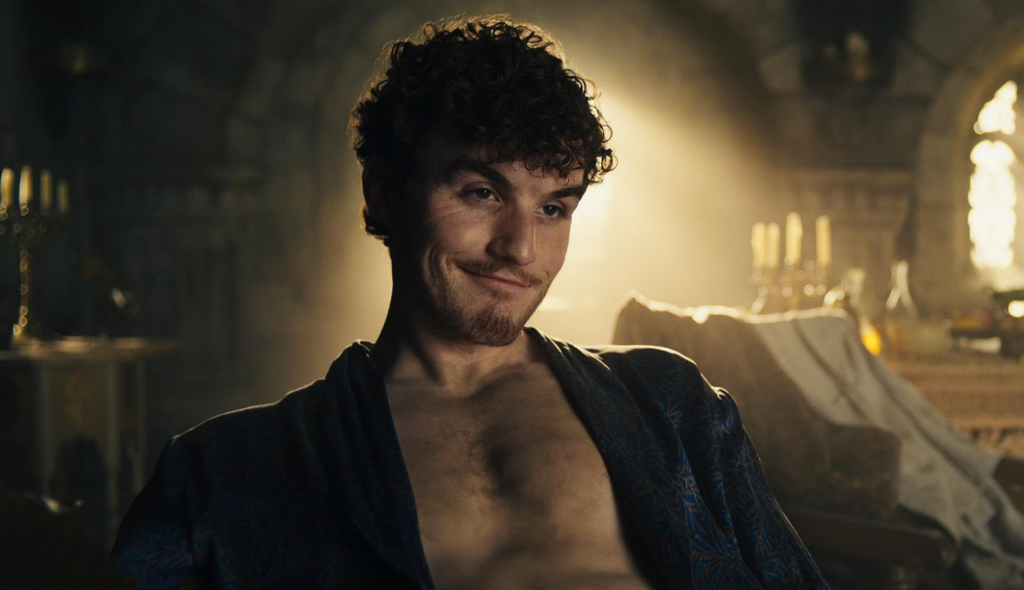
Of course, this is just one storyline among many. And while this can sometimes be overwhelming, in this case it wasn’t.
I’ll be honest, some of these storylines are going to drag for me. I know this because I’ve read some of the Wheel of Time books and I have an idea that not all the characters exactly pique my interest.
No one likes all the characters. No one likes all the storylines. While I am here for the political espionage between Queen Morgase and Siuan, not everyone likes it. While others might be fascinated with Selene trying to win Rand back, I couldn’t care less.
Having multiple storylines keeps everyone’s attention better. So long as things don’t get out of hand. Things can easily get out of hand. But this seems to be managed well.
So far.
What didn’t work
As I mentioned above, I’m not thrilled with Rand’s story at this point. And while it’s fine to not like a storyline when there are this many to choose from, it’s not fantastic that the one I like the least is the one involving our two main characters. And anytime we were with the team at the Spine of The World, the only thing that brought me joy was Moirain’s hat. It reminded me of Stockard Channing’s hat in Practical Magic.
The problem is that Rand is Charlie Brown with controversial magical powers. He is boring, serious, and pessimistic.
And yes, I understand that he has a heavy emotional burden and he’s the Dragon Reborn and that’s quite taxing and all. But let’s be fair, there isn’t a single person in this show that doesn’t have a heavy burden. And most of them manage to be fun occasionally.
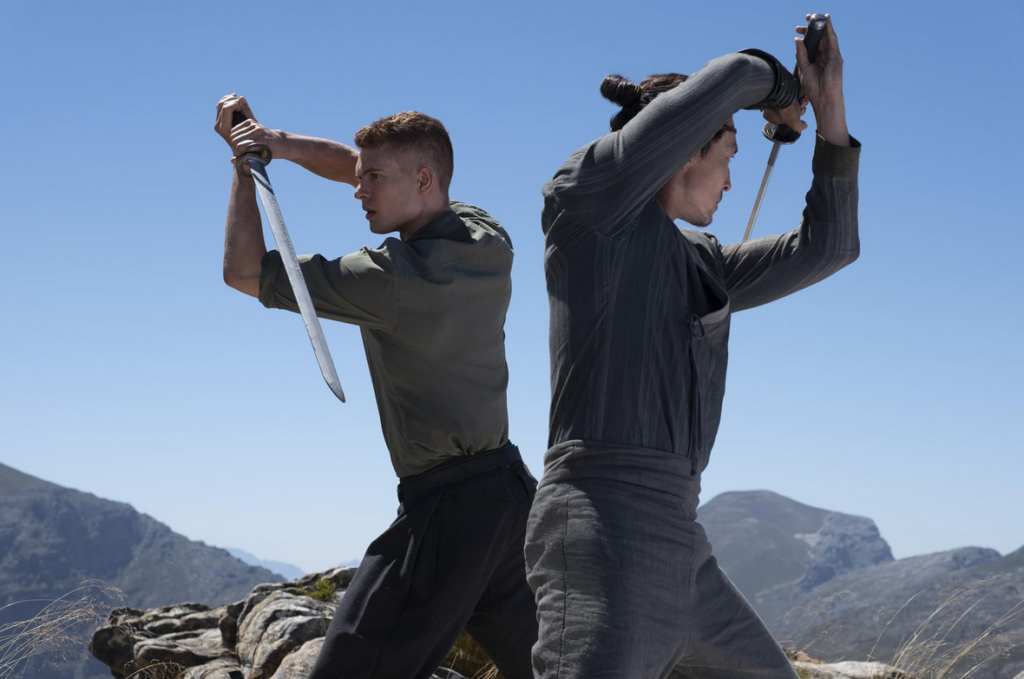
All that being said, this episode of Wheel of Time did exactly what it needed to do. It set up conflicts at each of the three locations. It established emotional ties between the characters and the events. And it established goals for everyone.
This was, in short, a solid episode. Not groundbreaking, not mind-blowing or life changing. It was simply good. It was entertaining and moved the plot forward.
Well done.
 (3.5 / 5)
(3.5 / 5)
Wheel of Time is back for season three. There are mixed feelings regarding this. Last season, there were some serious pacing issues. And some serious sticking to the book’s storyline issues. But we’re two seasons in, and we don’t give up so easily. So let’s dive into episode one, To Race the Shadow.
By the way, I highly recommend watching this episode with the subtitles on. You’ll see why.
The story
We begin this episode with Liandrin facing a trial of sorts for her rampant betrayal. She does her best to gaslight her Aes Sedai sisters into thinking that Siuan Sanche is the real traitor.
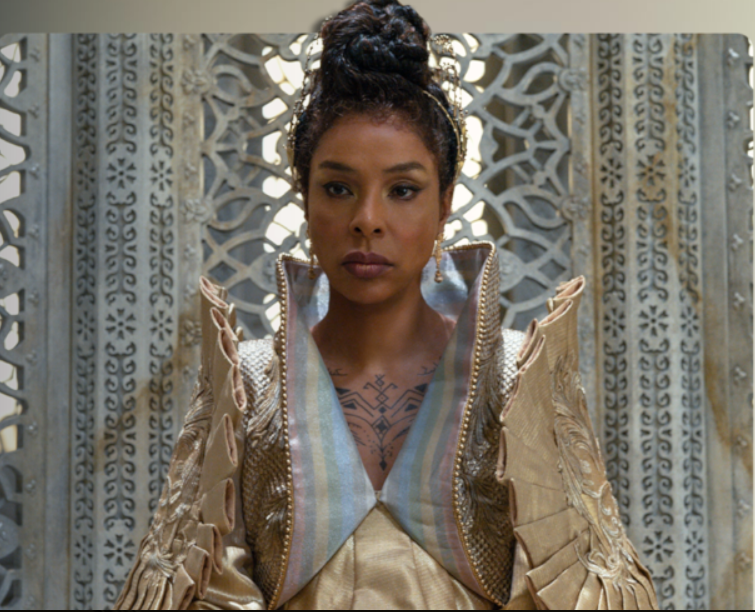
When that doesn’t work, she reveals how many Black Aes Sedai have actually infiltrated the tower.
Spoiler, it’s a lot.
In the aftermath, our whole team gathers to drink and enjoy one night of relaxation before they head out to the Tear to form an army for Rand. All is going well until they’re attacked by myriad creatures and a sentient axe.
What worked
This episode was long. It had a run time of an hour and eleven minutes. And a lot of that run time was spent in heavy dialog scenes.
Fortunately, these were well-done scenes.
If you’re going to have a lot of talking scenes, there are good ways and bad ways to do it. Last season, we saw lots of examples of the bad way to do it. But this episode did it well. For one thing, other things were going on while conversations were taking place. The characters are drinking, playing games, walking through an interesting city. And the scenes themselves didn’t stretch out. They weren’t repetitive. We heard what the character had to say, then we moved on.
It was also nice that the point of these scenes wasn’t just info dumps. We had character development. We had romantic interactions. We had plot development and foreshadowing.
Overall, this episode felt like what it was. A moment of calm before a storm.
Taking a step back, I’d be remiss if I didn’t address the fight scene at the start of the episode. Because it was epic.
The magic looked amazing. The martial arts that went along with it looked fantastic. The costumes were beautiful. It was just incredibly fun to watch.
More than that, it was emotional. We lost some characters in that fight that were important. And it was clearly emotionally shattering for many of our characters, who found themselves betrayed by people they trusted.
So many of them.
It was a great way to open the season.
What didn’t work
Despite that, this episode wasn’t without its flaws.
First off, there were a lot of dialog scenes. And they were good scenes, as I’ve already discussed. But it was one after another after another. And when your episode is, again, an hour and eleven minutes, it’s maybe a little much to have so much chit-chat. Couldn’t some of these conversations, important as they were, have been moved to maybe another episode?
Finally, I want to talk about Egwene’s travel through the arches.
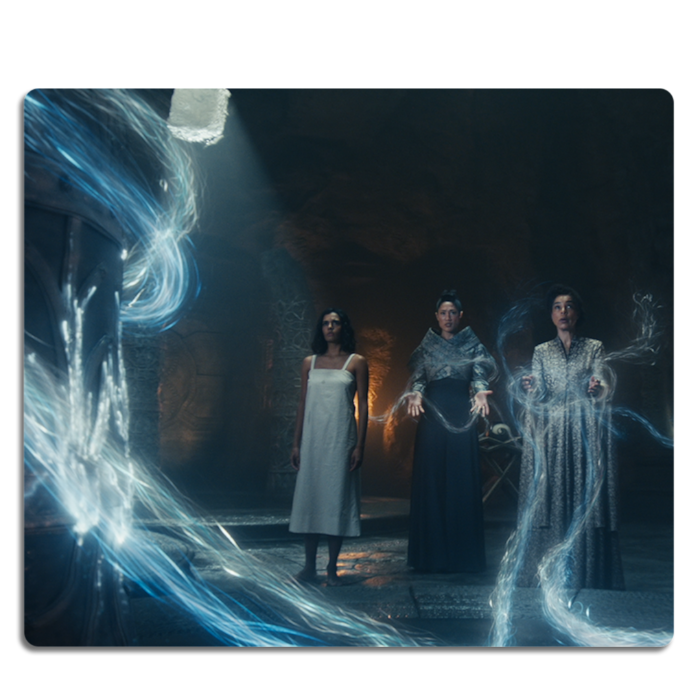
I feel like maybe there were some deleted scenes here. Because there must have been more to that visit than what we saw, right?
We could have seen Egwene battle Rand. That would have been badass and emotionally devastating. We could have seen her with a quiet life with Rand back home at the Two Rivers. We could have seen anything except for the quick clip of Rand in a bloody river, followed by Egwene being shoved back out in a bloody shift.
No products found.
Bad job. But at least it wasn’t an extended scene of Moiraine collecting bathwater, and then taking a bath while looking sad. If we’d started this season with another scene like that, it might have broken my brain.
Amazon dropped the first three episodes at once. So we’ll be back soon to talk about episode two. See you then.
 (4 / 5)
(4 / 5)

